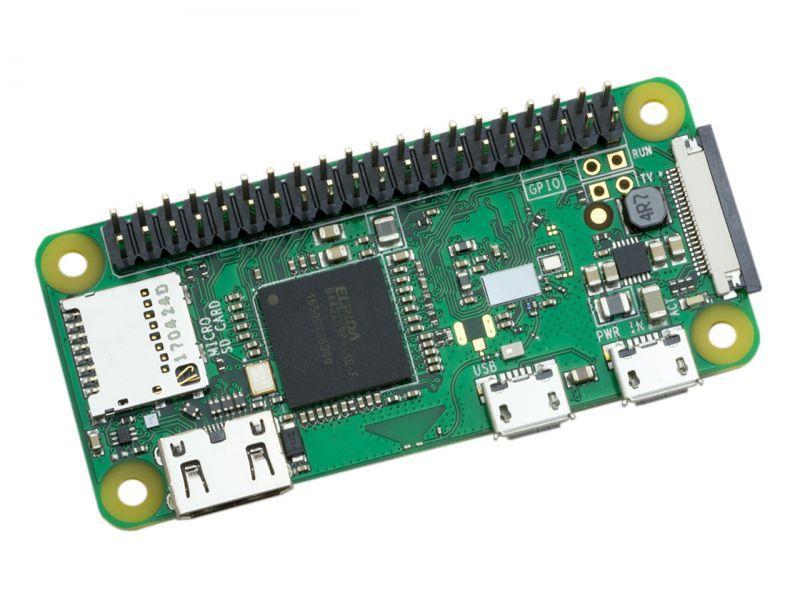Raspberry Pi Zero: Lime and Seeed launch cheap SDR bundle for Raspberry Pi
The $249 package includes an array of sensors and equipment to build IoT devices


Lime Microsystems and Seeed Studio have launched a low-cost software defined radio starter kit for Raspberry Pi, designed to open up the radio app development environment to Raspberry Pi Zero and Pi 3 users.
The $249 (180) bundle includes a LimeSDR Mini with two antennae running on the 433/868/915MHz unlicensed bands. It also comprises a GrovePi+ add-on board and a range of Grove sensors, such as the Ultrasonic Ranger distance measurement module, temperature and humidity sensor, light sensor, sound sensor, an LCD RGB backlight, buzzer, touch sensor and vibration sensor, alongside other add-ons for producing a whole spectrum of IoT devices.
"One of the key reasons we created the LimeSDR was to open access to this technology to as many people as possible. This kit plays a big part in enabling this," Ebrahim Bushehri, CEO of Lime.
"Of course, the kit is not limited to Scratch and educational environments, so we'll also be putting together examples that demonstrate how the kit can be used to develop applications that integrate with existing off-the-shelf systems, such as wireless thermostats and remote controls."
The entire bundle can be developed using Lime's ScratchRadio software extension to create innovative devices and applications spanning cellular, IoT, digital video broadcasting (DVB), Global Navigation Satellite System (GNSS) and radio frequency (RF).
"We are excited to announce that we've partnered with Lime Microsystems to develop the Grove Starter Kit for LimeSDR Mini," Eric Pan, CEO of Seeed, said. "It will provide a great platform for users to learn about SDR and help kick off IoT projects with the LimeSDR Mini. We cannot wait to see what the community will do with this new kit!"
16/01/2018:The Raspberry Pi Zero WH comes readymade for hardware projects
Get the ITPro daily newsletter
Sign up today and you will receive a free copy of our Future Focus 2025 report - the leading guidance on AI, cybersecurity and other IT challenges as per 700+ senior executives
The Raspberry Pi Foundation has quietly launched a new version of its microcomputer device, with a header professionally soldered on to make it easier to use for hardware projects.
The Raspberry Pi Zero WH (the 'H' stands for header) is essentially the Raspberry Pi Zero W for those who can't bear fumbling around with a messy soldering iron.
"Imagine a Raspberry Pi Zero W. Now add a professionally soldered header. Boom, that's the Raspberry Pi Zero WH! It's your same great-tasting Pi, with a brand-newcrust? It's perfect for everyone who doesn't own a soldering iron or who wants the soldering legwork done for them," the Raspberry Pi Foundation's Alex Bate said.
"You may want the header for prototyping before you commit to soldering wires directly to a board. Or you may have a temporary build in mind for your Zero W, in which case you won't want to commit to soldering wires to the board at all."
This new soldered-on header setup could also reduce the setup costs of trying out physical computing, the foundation said. And with the GPIO expander tool, Raspberry Pi fans can access the GPIO pins on the header with a PC or Mac without the need to use the SSH (Secure Shell) protocol, adding a greater deal of flexibility over previous releases.
The new Raspberry Pi Zero WH is available now from the PiHut website for just 13.40. However, don't expect to get your mitts on it just yet, as the site quotes limited availability for the moment.
The Zero W sold 250,000 units in just nine weeks last year, but Pi creator Eben Upton has told IT Pro that it'll be a long while before the Pi 4 comes out.

Clare is the founder of Blue Cactus Digital, a digital marketing company that helps ethical and sustainability-focused businesses grow their customer base.
Prior to becoming a marketer, Clare was a journalist, working at a range of mobile device-focused outlets including Know Your Mobile before moving into freelance life.
As a freelance writer, she drew on her expertise in mobility to write features and guides for ITPro, as well as regularly writing news stories on a wide range of topics.

